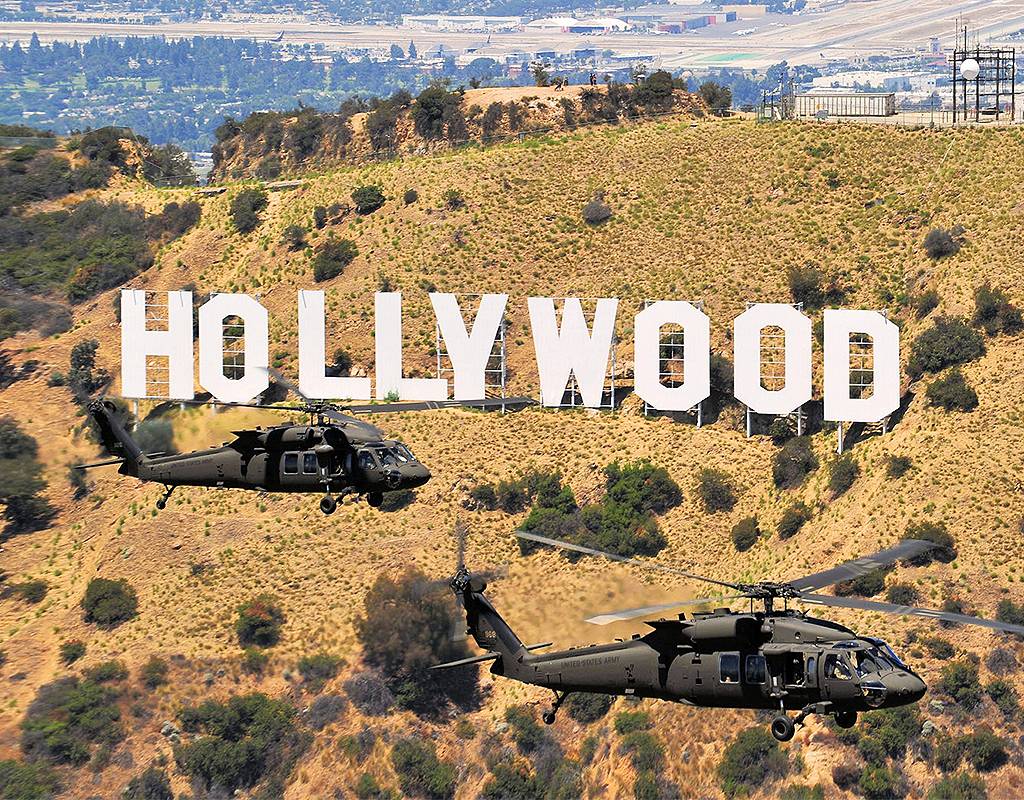
A 12-ship Black Hawk formation flight provided practice and an opportunity to properly send off a beloved California Army National Guard aviation battalion pilot.
In the early afternoon of July 31, 2020, a dozen olive-colored UH-60M Black Hawks taxied to the runway at Los Alamitos Army Airfield, in the heart of Los Angeles, and prepared to flock into the Southern California sky.
Ostensibly a training exercise to school pilots in the intricacies of flying Black Hawks in large formations, the event served double duty as a sendoff for a beloved retiring standardization pilot for the California Army Guard’s 1-140th Assault Helicopter Battalion.
After months of planning, the 12 UH-60Ms were lined up on the flight line for the event that would serve as a capstone to two weeks of annual training at Camp Roberts, California. The event also celebrated the retirement of one of the unit’s longest serving and most respected aviators, CW5 Robert Metoyer, who served 34 years in the Army and National Guard.
About 1 p.m., with an extensive pre-flight briefing fresh in mind, pilots started the Black Hawks’ engines. One by one the helicopters taxied out to the runway, lifted off in order from front to back and headed west for the coast. From Los Angeles harbor the dozen helicopters flew in tight formation north to the Santa Monica mountains and inland, past the Hollywood sign, silhouetted dark green against the iconic white letters.

Formation flying
A staggered formation was carefully maintained during the flight, with pilots and crew observing proper separation between aircraft. Formation flying is a unique skill for pilots, who must act like individuals in a flock of birds, both anticipating and reacting to the movement of nearby aircraft while maintaining communication with crew and fellow pilots in the formation.
Each UH-60M crew chief and gunner watched from their open windows to make sure everyone was staying close but not too close. When flying in large assault groups, course corrections made by the lead aircraft ripple through the formation as each successive pilot maintains position relative to the other aircraft. Small corrections in altitude or heading by the leading helicopter can translate to significant required corrections by the trailing aircraft.
Smooth flying and constant communication are vital at all times. The process is exaggerated during turns, which the formation performed once it passed downtown L.A. Maintaining formation, the dozen Black Hawks entered the sky over Orange County where they overflew Angels Stadium.
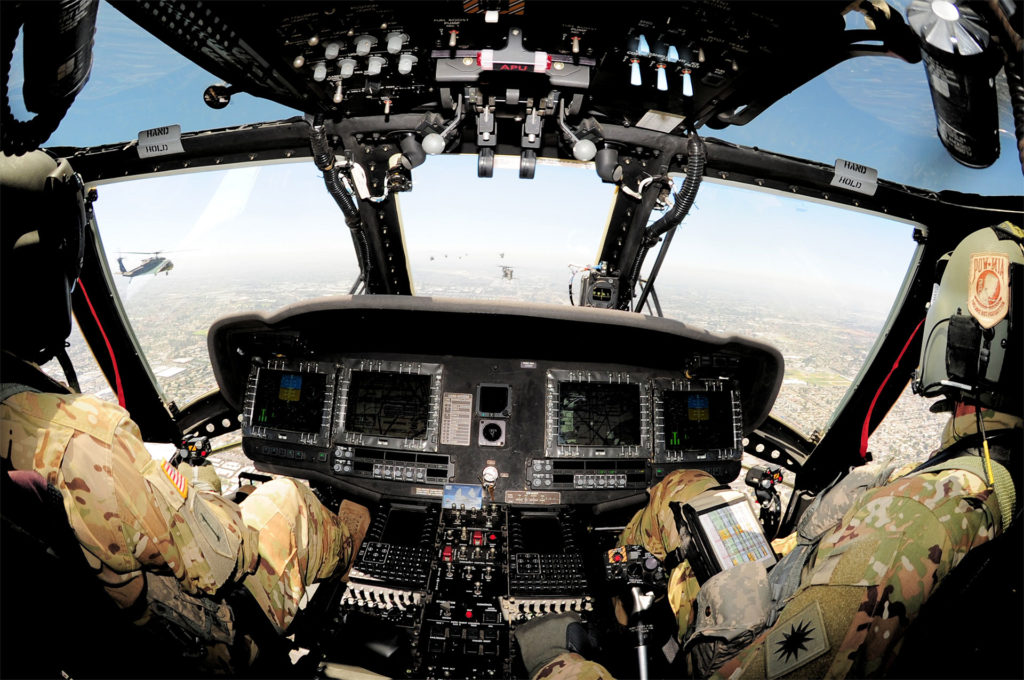
The flight tightened up as it approached Los Alamitos and each aircraft landed and began taxiing in toward a special reception for Metoyer. A pair of the base’s fire trucks arched jets of water over the retiring chief warrant officer’s helicopter as it headed for the hangar.
Many missions
The 2020 training event saw only the 1-140th flying over Southern California because of the Covid-19 crisis, whereas in normal times there are CH-47 Chinook and UH-72 Lakota units participating. Training consisted of deploying 10 UH-60Ms to Camp Roberts just north of Paso Robles, California. Pilots and crew trained specifically for multi-ship and tactical helicopter operations. The unit conducted day missions and night operations using night vision goggles to include infiltration/exfiltration, casualty evacuation, responding to downed aircraft and personnel recovery.
When deployed to combat zones, the 1-140th Assault Helicopter Battalion primarily performs air assault operations in direct support of infantry. The complex and risky operations are performed day and night as required.
A typical mission would see the unit’s helicopters transporting infantry troops to the battlefield and flying in support of troops on the ground. Armed with door-mounted machine guns, the Black Hawk helicopters move people internally and cargo such as artillery, ammunition and other supplies externally.
In California, the unit’s Guard-specific mission ranges from working with California’s firefighting agency Cal Fire to supporting federal, state and local agencies responding to natural disasters such as earthquakes and flooding. For the firefighting mission the aircraft use 660-gallon Bambi Buckets to fight wildland and brush fires. The aircraft also provide requested logistical support varying from fire reconnaissance to moving firefighting command staff. Wildland firefighting missions are typically supported every year from May to November, but the season has extended into February some years.
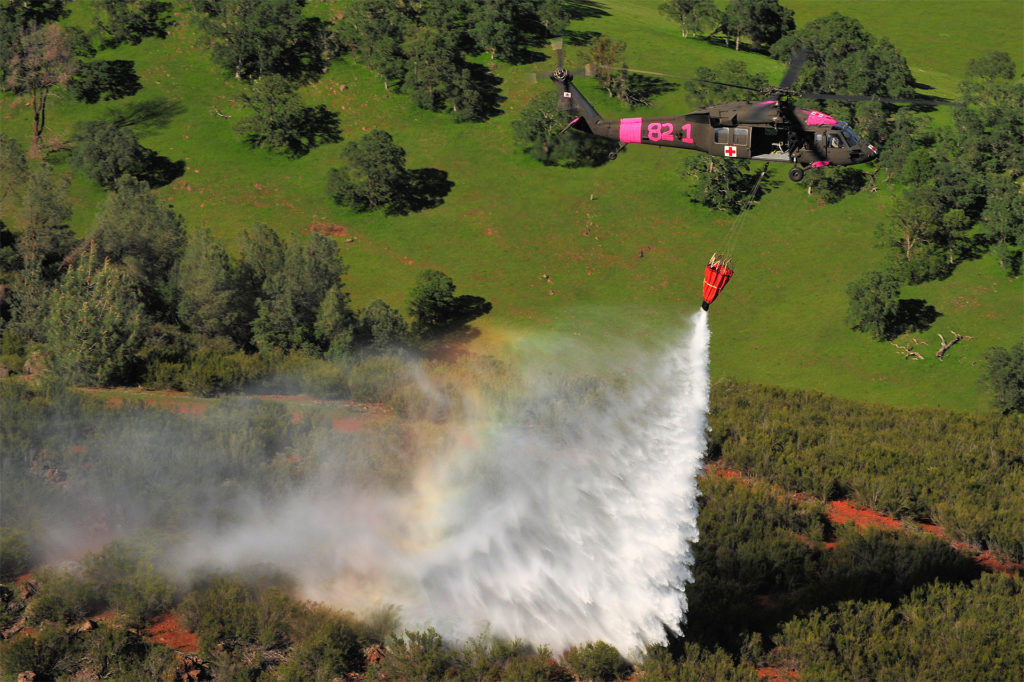
Helicopters belonging to the unit were used in 2019 to transport state geologists to inspect fault lines and cracks in the earth’s surface following a series of major earthquakes.
In January 2018, the 1-140th helped rescue people and livestock from around Santa Barbara in the aftermath of mudslides and a major wildfire. Its helicopters helped plug holes in the Lake Oroville spillway when it gave way and forced the evacuation of 180,000 people in early 2017.
M-model measures up
Comparing the newest UH-60M to the older UH-60A, A+ and UH-60L, the difference isn’t so much about power and lift as about pilot situational awareness. The UH-60M’s glass cockpit reduces pilot workload, allowing them to focus on the mission. Aside from four multi-function displays, the aircraft avionics include a moving map with integrated threat awareness system, engine instrument caution advisory system (EICAS) hover symbology, increased communication capabilities, electronic standby instrument system (ESIS), ADS-B out capable transponder, GPS, and a fully coupled four-axis autopilot.
“The Black Hawk is definitely a more capable platform than the earlier UH-1H Huey I flew at the start of my career,” Metoyer told Valor. “The Black Hawk, even the A-model had much more power, redundant systems, better technology that reduced pilot work, and made for a much more survivable aircraft in combat. The blades, drivetrain and crashworthy designed airframe gives everyone onboard a good chance of survival after substantial combat damage or having to do a hard landing.”
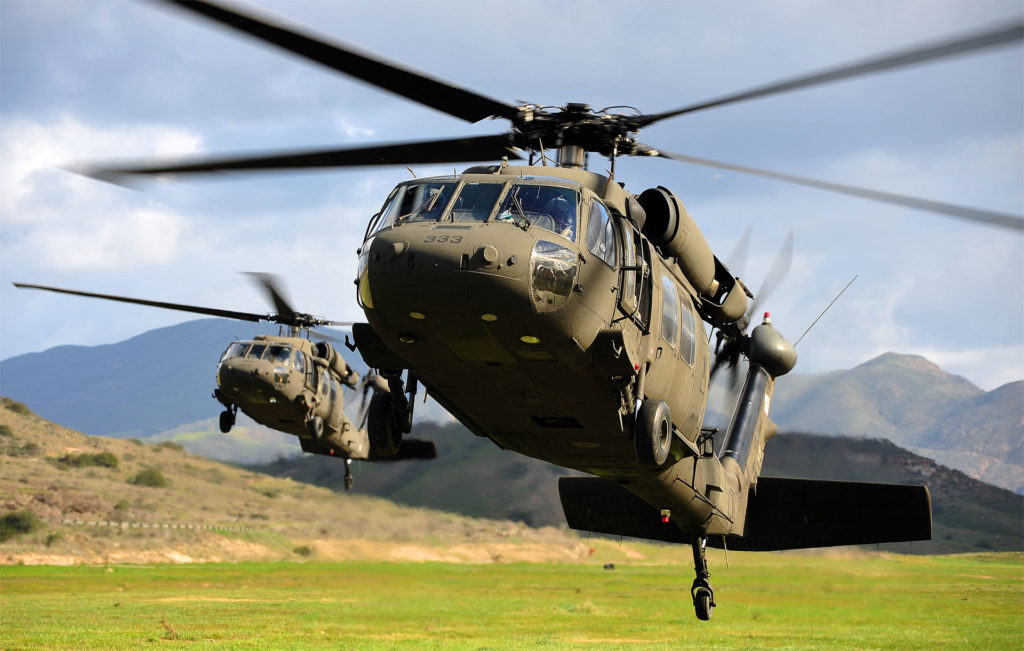
The Black Hawk and its variants are well known for having some of the more durable and reliable engines — the latest version GE T700-GE-701D/DC — ever put in a helicopter, Metoyer said. Due to the increased weight of the airframe the UH-60M has about the same effective payload as a UH-60L but can carry that weight higher and hotter than the L-model. In addition, the new wide-chord blades with anhedral tip caps help improve aircraft performance. These and other upgrades inherent to the M-model should ensure that, after more than 40 years in continuous service, the UH-60 will continue serving for decades to come.
1-140th Maintenance Test Pilot CW2 Mike Nobriga told Valor the UH-60M provides better situational awareness while reducing pilot workload and fatigue levels.
“It responds much more quickly and predictably, and it continues to perform in extremely austere environments,” he said. “The newer airframes require far less maintenance and what problems we have are more easily troubleshot and repaired thanks to all the computer monitoring. The Integrated Vehicle Health Monitoring System (IVHMS) allows for better monitoring of mechanical systems which allows for increased lifetimes of major components, decreasing operational costs.”
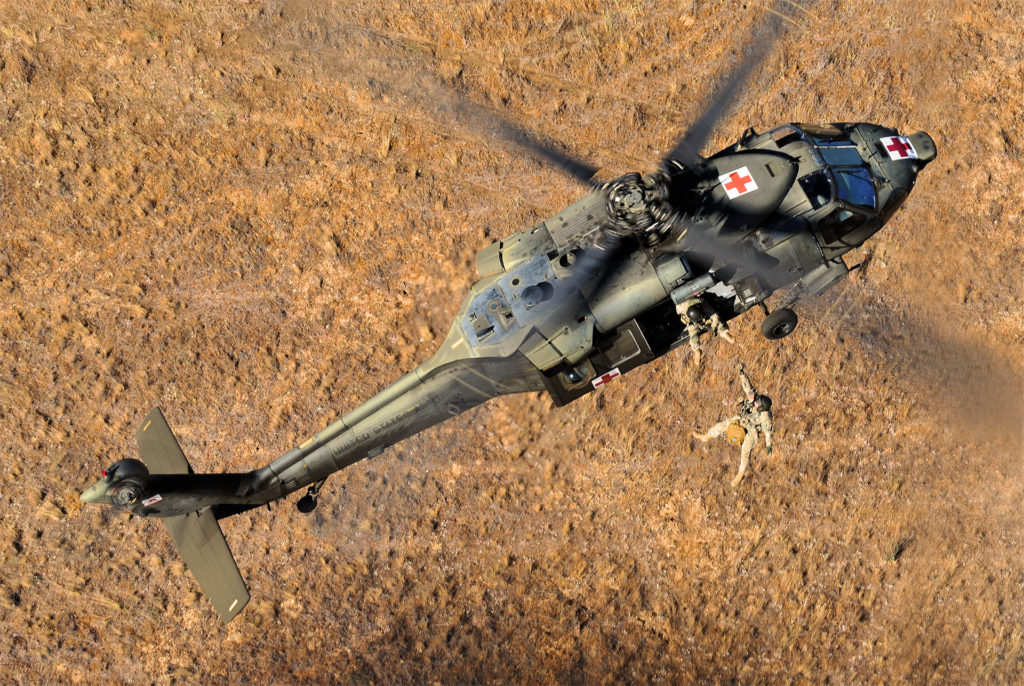
The UH-60M is “more comfortable, more maneuverable, [has] better performance, [is] easier to fly, a better IFR platform, and more survivable,” Nobriga summarized. “I, for one, love flying it.”

